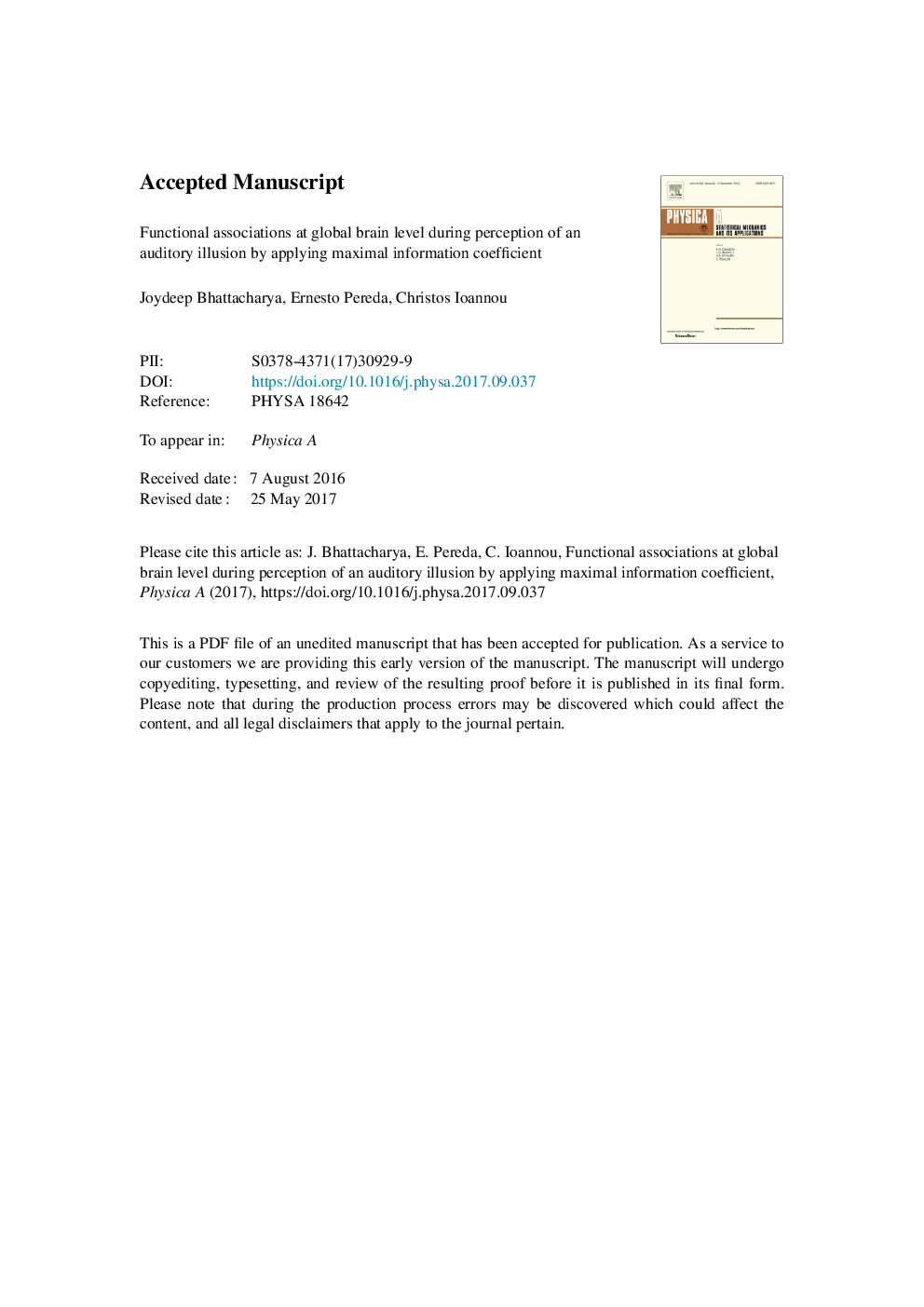| Article ID | Journal | Published Year | Pages | File Type |
|---|---|---|---|---|
| 7376457 | Physica A: Statistical Mechanics and its Applications | 2018 | 22 Pages |
Abstract
Maximal information coefficient (MIC) is a recently introduced information-theoretic measure of functional association with a promising potential of application to high dimensional complex data sets. Here, we applied MIC to reveal the nature of the functional associations between different brain regions during the perception of binaural beat (BB); BB is an auditory illusion occurring when two sinusoidal tones of slightly different frequency are presented separately to each ear and an illusory beat at the different frequency is perceived. We recorded sixty-four channels EEG from two groups of participants, musicians and non-musicians, during the presentation of BB, and systematically varied the frequency difference from 1 Hz to 48 Hz. Participants were also presented non-binuaral beat (NBB) stimuli, in which same frequencies were presented to both ears. Across groups, as compared to NBB, (i) BB conditions produced the most robust changes in the MIC values at the whole brain level when the frequency differences were in the classical alpha range (8-12 Hz), and (ii) the number of electrode pairs showing nonlinear associations decreased gradually with increasing frequency difference. Between groups, significant effects were found for BBs in the broad gamma frequency range (34-48 Hz), but such effects were not observed between groups during NBB. Altogether, these results revealed the nature of functional associations at the whole brain level during the binaural beat perception and demonstrated the usefulness of MIC in characterizing interregional neural dependencies.
Related Topics
Physical Sciences and Engineering
Mathematics
Mathematical Physics
Authors
Joydeep Bhattacharya, Ernesto Pereda, Christos Ioannou,
